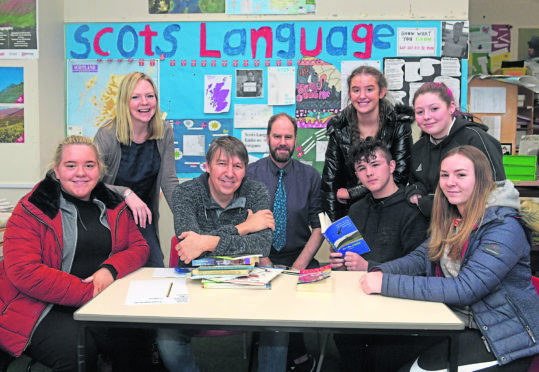Pupils in an Aberdeenshire school are being taught Scots to make them fit like for purpose.
Banff Academy has teamed up with academics from Aberdeen University to investigate whether the language has a positive impact on learning.
The youngsters taking part in the study will complete the Scots Language Award, a national qualification that provides the opportunity to study the history and development of the Scots language.
BLACK FRIDAY OFFER: Two years of unlimited access to The P&J Digital — at better than half price!
And organisers hope the course will help pupils excel across the curriculum.
Project leader, Claire Needler, is researching contemporary use of Scots, particularly amongst young people, to see how, where and when it is employed in daily life.
She said: “I am particularly interested in how speaking Scots can contribute to a sense of place, belonging and community.
“More than 50% of people in Aberdeenshire identify as Scots or Doric speakers, with even higher numbers in our northern coastal communities.
“Working in partnership with pupils from Banff Academy has shown me that Scots is very much a living language that is used every day.
“It can provide a real boost in confidence which reaps rewards not only in this area but right across the curriculum.
“However, this is purely anecdotal and we wanted to investigate it in a more robust way.”
Humanities teacher Jamie Fairbairn explained that a significant number of pupils engaged with the expressive dialect during the course which has been taught since 2014.
He said: “Many of our students come from Doric speaking families and have grown up using the Scots language. However, many have never had an opportunity to write in it or to use it in a more academic way.
“For some, it has had a quite transformative effect.
“They can see that this is a subject in which they can really shine and, particularly for those who may have struggled in some other areas, it can boost their self-esteem which in turn has an impact on their wider achievement.”
Students will complete the course as normal but the feedback will be assessed across a wider spectrum.
Councillor and chairwoman of Aberdeenshire Council’s Education and Children’s Services Committee, Gillian Owen, backs the new venture.
She said: “It’s very pleasing to see Aberdeenshire’s rich cultural heritage being used to educate, inspire and excite young people as well as giving them the opportunity to learn about their mother tongue.”










